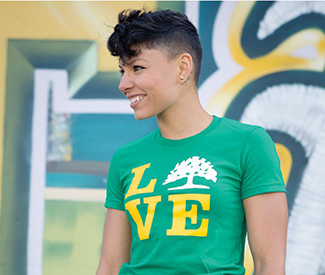arts@sfbg.com
CULTURE
Do you know where your clothes come from: Bangladesh? China? Possibly. Clothes are a commodity whose origins are often taken for granted. Fashion followers glamorize garments as collectible items, while others value comfort above all. In most cases, customers will size up a garment’s price or style first, rather than considering where or how it was manufactured.
But consider this: The production end of the apparel industry impacts the world significantly. The fashion industry employs one-sixth of the world’s population. An estimated 250 million children work in sweatshops. The lack of regulation results in unfair labor and pollution around the world. It is the second most polluting industry, second only to oil. Due to the toxic waste discharge in China, you can tell what colors are in season by looking at the rivers. The deadliest garment-factory accident in history, the Bangladesh factory collapse last year, killed 1,129 workers and injured twice as many.
The fact of the matter is, if you care about where your craft beer came from, whether your apple is organic, or if your latte contains fair-trade coffee, you need to be applying that same consciousness to your clothes. Read on for ways to whip your fashion karma into shape.
Click the image above to see our flowchart, “So you want to shop sustainably…”
SHOP SOCIAL
Global warming isn’t going anywhere. Why not help save the world (as summers grow hotter) one T-shirt at a time? Many independent (and several mainstream) brands have partnered with nonprofits to support the environment. Eco-friendly SF-based brand Amour Vert (www.amourvert.com) developed the Plant A T(r)EE program, in which a tree is planted in the US with each T-shirt purchase. According to the company, 15,000 have taken root so far, with plans to reach 100,000 by 2015. Other eco-conscious brands, including Alternative Apparel (www.alternativeapparel.com), support the workers behind the products. Though the company sources its materials in Peru, it works to ensure fair labor practices. Both of these brands design fashionable apparel with organic cotton and other natural, sustainable fabrics — which can result in higher prices. But if your clothing budget allows, it pays to focus on quality, not quantity.
SHOP SECONDHAND
Thrift shopping is probably the easiest and cheapest way to reduce your carbon footprint. The average American throws out 68 pounds of textiles every year. By buying secondhand, you’re saving water and energy that would otherwise be used to manufacture new products, not to mention keeping textile waste out of landfills — and curating your own unique style in the process.
When you clean out your closet, donate your duds to a local thrift store instead of discarding them. Somewhere, there’s a vintage shopper who will treasure that sparkly mini-dress you wore one long-ago New Year’s Eve.
SHOP LOCAL
Why haunt the mall when San Francisco has a plethora of homegrown makers? Eco-friendly apparel defies stereotypes (it’s not just hemp dresses anymore) thanks to independent, multi-brand shops like the Mission District’s Gravel & Gold (www.gravelandgold.com) and new Hayes Valley spot Gather (www.gathersf.com), both of which thoughtfully select products to create a connection with the craftspeople behind the designs. Progressive street style brands like San Franpsycho (www.sanfranpsycho.com) and Oaklandish (www.oaklandish.com) celebrate local love while keeping their manufacturing nearby. You can also find city blocks packed with locally made goods at craft and street fairs like the roving Urban Air Market (www.urbanairmarket.com).
But be wary. A label reading “Made in the US” does not guarantee the garment was produced under fair labor conditions. Despite labor laws, sweatshops still exist on our shores. Be an informed, aware shopper, and make sure your dollars are supporting an ethical company before you make a purchase. *


